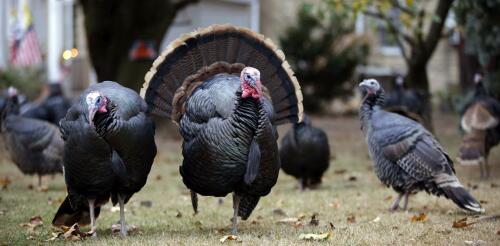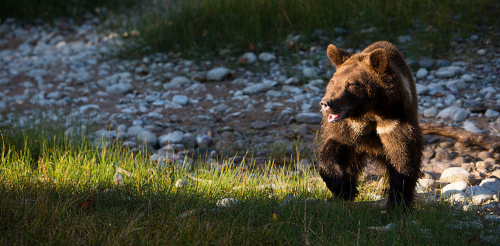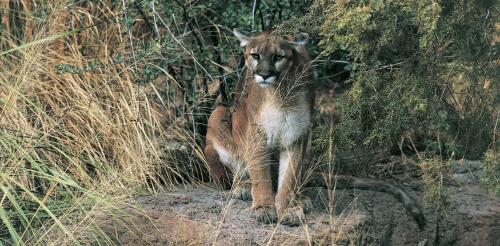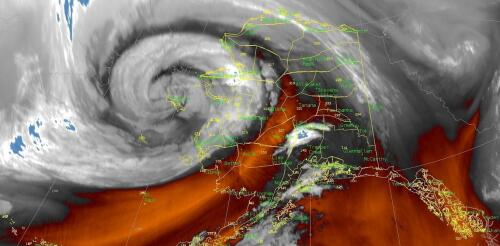Hunting
Birdsong is a welcome sign of spring, but robins and cardinals aren’t the only birds showing off for breeding season. In many parts of North America, you’re likely to encounter male wild turkeys, puffed up like beach balls and with their tails fanned out, aggressively strutting through woods and parks or stopping traffic on your street. Wild turkeys were abundant across North America when European settlers arrived. But people killed them indiscriminately year-round – sometimes for their meat and feathers, but settlers also took turkey eggs from nests and poisoned adult turkeys to keep them from damaging crops. Thanks to this unregulated killing and habitat loss, by 1900 wild turkeys had disappeared from much of their historical range. Turkey populations gradually recovered over the 20th century, aided by regulation, conservation funding and state restoration programs. By the early 2000s, they could be found in Mexico, Canada and every U.S. state except Alask...
Montanans know spring has officially arrived when grizzly bears emerge from their dens. But unlike the bears, the contentious debate over their future never hibernates. New research from my lab reveals how people’s social identities and the dynamics between social groups may play a larger role in these debates than even the animals themselves. Social scientists like me work to understand the human dimensions behind wildlife conservation and management. There’s a cliché among wildlife biologists that wildlife management is really people management, and they’re right. My research seeks to understand the psychological and social factors that underlie pressing environmental challenges. It is from this perspective that my team sought to understand how Montanans think about grizzly bears. To list or delist, that is the question In 1975, the grizzly bear was listed as threatened under the Endangered Species Act following decades of extermination efforts and habi...
Hunting large carnivores is a contentious issue in wildlife management and conservation. It’s on the ballot in fall 2024 in Colorado, where voters will consider Proposition 127, a proposed ban on hunting and trapping of mountain lions, bobcats and lynx in the state. Wildlife agencies often use regulated hunting as a tool for controlling carnivore populations, reducing their impacts on vulnerable wildlife or minimizing the risk of conflict between carnivores and people, pets and livestock. But scientific studies have questioned how effectively recreational hunting achieves these goals. And public attitudes are shifting as participation in hunting declines. We direct Colorado State University’s Center for Human-Carnivore Coexistence and Animal-Human Policy Center. Together with our colleague Benjamin Ghasemi, we recently surveyed Colorado residents about their perceptions of hunting mountain lions and black bears in the state. We found that support for hunting depen...
From sports to pop culture, there are few themes more appealing than a good comeback. They happen in nature, too. Even with the Earth losing species at a historic rate, some animals have defied the trend toward extinction and started refilling their old ecological niches. I’m a philosopher based in Montana and specialize in environmental ethics. For my new book, “Tenacious Beasts: Wildlife Recoveries That Change How We Think About Animals,” I spent three years looking at wildlife comebacks across North America and Europe and considering the lessons they offer. In every case, whether the returnee is a bison, humpback whale, beaver, salmon, sea otter or wolf, the recovery has created an opportunity for humans to profoundly rethink how we live with these animals. One place to see the rethink in action is Colorado, where voters approved a ballot measure in 2020 mandating the reintroduction of gray wolves west of the Continental Divide. Colorado’s Parks and W...
The powerful remnants of Typhoon Merbok pounded Alaska’s western coast on Sept. 17, 2022, pushing homes off their foundations and tearing apart protective berms as water flooded communities. Storms aren’t unusual here, but Merbok built up over unusually warm water. Its waves reached 50 feet over the Bering Sea, and its storm surge sent water levels into communities at near record highs along with near hurricane-force winds. Merbok also hit during the fall subsistence harvest season, when the region’s Indigenous communities are stocking up food for the winter. Rick Thoman, a climate scientist at the University of Alaska Fairbanks, explained why the storm was unusual and the impact it’s having on coastal Alaskans. What stands out the most about this storm? It isn’t unusual for typhoons to affect some portion of Alaska, typically in the fall, but Merbok was different. It formed in a part of the Pacific, far east of Japan, where historically few ty...




